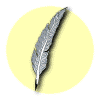










 According to mythology, Patmos was called Letoisse and it was the island of Diana, daughter of Leto, after whom the island was named. Myth claims that Patmos lay on the bottom of the sea. Selini, the moon, was in love with Endymion, who would sleep in the temple of Diana at Karia, and every time she saw him, she would light the island in the water, creating a scene of unique beauty. Selini, asked Diana to raise the island above the sea and this was achieved with the help of Apollo, brother of Diana, who asked this favour from his father, Zeus. After the island emerged and was warmed by the sun, Diana encouraged many people to inhabit it.
According to another myth, the island was named by Neptune when he stepped on it (step: patima), thus the island was called at first "Patnos" and later "Patmos".
According to mythology, Patmos was called Letoisse and it was the island of Diana, daughter of Leto, after whom the island was named. Myth claims that Patmos lay on the bottom of the sea. Selini, the moon, was in love with Endymion, who would sleep in the temple of Diana at Karia, and every time she saw him, she would light the island in the water, creating a scene of unique beauty. Selini, asked Diana to raise the island above the sea and this was achieved with the help of Apollo, brother of Diana, who asked this favour from his father, Zeus. After the island emerged and was warmed by the sun, Diana encouraged many people to inhabit it.
According to another myth, the island was named by Neptune when he stepped on it (step: patima), thus the island was called at first "Patnos" and later "Patmos".

 Traces of residencies, temples and fortifications indicate the inhabitation of Patmos since ancient times. The Mycenaeans give an account of the island's inhabitants, while modern historians claim that Patmos' first inhabitants were Kares, Leleges and Pelasgi. During the Roman years, Patmos was the land of exile of the Epistle John who wrote "Apocalypse" inside the cave of the same name. The island suffered a long period of desertion until 1088, when it was offered to St Christodoulos by Alexios Komnenos AŽ. After the fall of Constantinople, many Christians sought refuge here, and the island thrived in the late 16th - early 17th century, due to its commercial connection with Crete, occupied at the time by the Venetians.
In 1537, the island's Turkish Occupation began, and in 1713, the monk and Scholar Makarios Kologeras established the School of Patmos. Patmos was also the homeland of Emmanuel Xanthos, one of the founders of Hetaeria, who attended courses in the School of Patmos.
The Turkish Occupation lasted until 1912, when the island came under the command of the Italians. Patmos, like all the Dodecanese islands, was united with Greece on 7 May 1948.
Traces of residencies, temples and fortifications indicate the inhabitation of Patmos since ancient times. The Mycenaeans give an account of the island's inhabitants, while modern historians claim that Patmos' first inhabitants were Kares, Leleges and Pelasgi. During the Roman years, Patmos was the land of exile of the Epistle John who wrote "Apocalypse" inside the cave of the same name. The island suffered a long period of desertion until 1088, when it was offered to St Christodoulos by Alexios Komnenos AŽ. After the fall of Constantinople, many Christians sought refuge here, and the island thrived in the late 16th - early 17th century, due to its commercial connection with Crete, occupied at the time by the Venetians.
In 1537, the island's Turkish Occupation began, and in 1713, the monk and Scholar Makarios Kologeras established the School of Patmos. Patmos was also the homeland of Emmanuel Xanthos, one of the founders of Hetaeria, who attended courses in the School of Patmos.
The Turkish Occupation lasted until 1912, when the island came under the command of the Italians. Patmos, like all the Dodecanese islands, was united with Greece on 7 May 1948.
http://www.areianet.gr/infoxenios/
